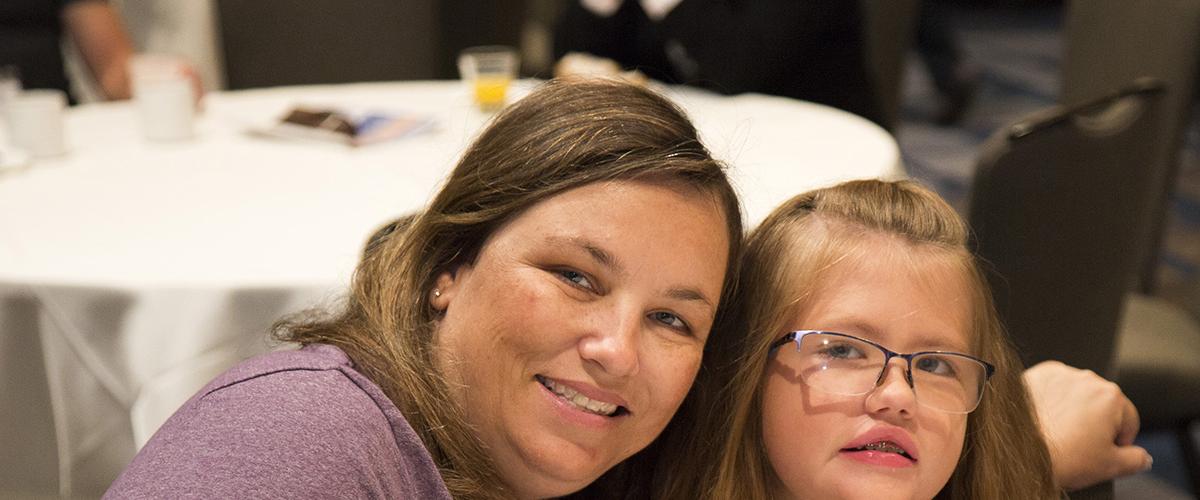When the 11th meeting of the International Myotonic Dystrophy Consortium (IDMC-11) met in San Francisco in September 2017, Dr. Giovanni Meola was in attendance, as he has been since the first biennial meeting in Paris, France, in 1997. Dr. Meola, a pioneer in myotonic dystrophy research, has focused his more than 40-year career on the disease and continues to share research which provides new understandings of myotonic dystrophy (DM).
“It is really a very good meeting,” said Dr. Meola, chairman of the Department of Neurology and Stroke-Unit at IRCCS Policlinico San Donato and director of the neurology residency program at the University of Milan. “It is a meeting where there is a DM community, and there is a good exchange between basic scientists and clinicians.”
Dr. Meola became fascinated with DM after graduating from medical school at the University of Milan and completing his residency in neurology. During postgraduate training and fellowship appointments at England’s Newcastle General Hospital, and later at New York-Presbyterian/Columbia University Medical Center, he became interested in the complexities of DM as a disease that involves both the muscles and a range of systems, including the central nervous system.
His many accomplishments include the development of a test to diagnose myotonic dystrophy type 2 (DM2) through the use fluorescence in situ hybridization, or FISH, a means of addressing the problem of false positives that can occur with the genetic test used to diagnose DM2 by looking for mutations of the CNBP gene in certain cells of the blood. He recently published a comprehensive review of the state of new CNS therapeutics for myotonic dystrophies with researcher Genevieve Gourdon of the French National Institute of Health and Medical Research (INSERM), in the April 2017 issue of Frontiers of Cellular Neuroscience. In addition, Dr. Meola is the principal investigator on a DM national registry in Italy.
New Insights
When Dr. Meola took the stage at IDMC-11, he shared new insights from two separate studies that could point the way forward for meaningful therapies that address serious health consequences of DM.
The first study involves research on the metabolic dysfunction that leads to the development of insulin resistance in DM patients. People with DM have a four-fold increased risk of developing diabetes. It has been previously shown that the missplicing of the insulin receptor gene in DM patients is associated with insulin resistance, a finding Dr. Meola confirmed with his research.
But he also sought to determine if in addition to that, whether signaling irregularities were also involved in the development of insulin resistance in DM patients. Dr. Meola is an expert on channelopathies of skeletal muscle, such as DM. These are diseases that involve the ion channels that convert chemical and mechanical signals into electrical ones.
The insulin signaling pathway is particularly complex. Dr. Meola looked downstream at the insulin signaling process and the muscle biopsies of patients with both DM1 and DM2, and found that DM patients with insulin resistance had alteration to several signaling proteins. Insulin resistance is more evident in DM2 patients.
He said the findings could be important and may suggest new therapeutic approaches to addressing the problem of insulin resistance in DM patients. He said the findings may also explain why DM patients often do not benefit from the use of metformin, a drug that is used as a first-line therapy to treat type 2 diabetes. A paper about the research has been submitted to the open-access journal PLoS ONE
Another important piece of research that Dr. Meola discussed is the potential to detect early stage cardiomyopathies and cardiac conduction defects that can cause sudden death in DM patients through the use of a biomarker present in skeletal muscle. Such an approach is significant because it is not practical to biopsy cardiac tissue.
Dr. Meola determined that DM1 and DM2 patients with cardiomyopathies or conduction defects had alterations to fetal isoforms of troponin found in skeletal muscle biopsies. These same types of alterations were not present in control samples. Troponin is a regulatory protein that is found in muscle.
Performing biopsies in skeletal muscle to look for this altered form of troponin could alert doctors to cardiologic involvement in a DM patient’s disease and allow for early intervention strategies. This includes the potential to use antisense oligonucleotides as a potential therapeutic approach to treating it in the future.
Therapeutic Promise
Dr. Meola has seen steady progress in combatting myotonic dystrophy. Twenty years ago, he said, patients would not have been expected to live past their mid-50s. Today, patients with the disease are living well into their 70s.
Despite a clinical setback in the development of an antisense therapy to address DM1, he believes there’s great promise in the therapeutic approach and that it will lead to treatments that benefit patients.

